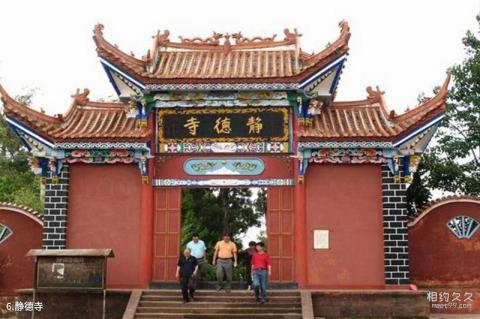
Introduction to Jingde Temple: Fangshan Jingde Temple was built in the third year of Yanyou in the Yuan Dynasty (AD 1316). It was founded by Lingnan Zen Master, the founder of Fangshan Buddhism. It is the earliest famous mountain to spread Buddhist culture in Chuxiong Prefecture. . At that time, the temple was large in scale, with three Buddhist halls (the Mahavira Hall, the Vajra Hall, and the Buddhist Sutra Tower), nine patios, 36 large and small houses with 126 rooms, 108 Buddha statues, and 800 monks. Pilgrims from Sichuan, Yunnan and Guizhou provinces gather at Fangshan for three major Buddhist gatherings (i.e. Guanyin Society, Prince Edward Society and Moonlight Society) every year. Bells and drums sound all day long, solemn and solemn, and green smoke fills the air. This heyday lasted for more than 600 years. In the ninth year of Xianfeng in the Qing Dynasty (1859), the temple was burned down and rebuilt in the twelfth year of the Republic of China (1923). Later, after Fangshan was developed, through the efforts of the people of the county, the entire temple building was destroyed during the "Cultural Revolution". In 1992, Jingde Temple was restored and rebuilt on its original site. The Jingde Temple that has been built now covers an area of 37.68 acres. It has the Tianwang Hall, the King Kong Hall, the Mahavira Hall, and 18 large and small Buddha statues. It has a construction area of 3,700 square meters. There are ancient cypresses, Qinggang oak, Yunnan catalpa wood, peacock fir and other ancient, Hundreds of nationally protected plants were planted during the Ming Dynasty. The temple is located on Lixiang Peak on the top of Fangshan Mountain.
